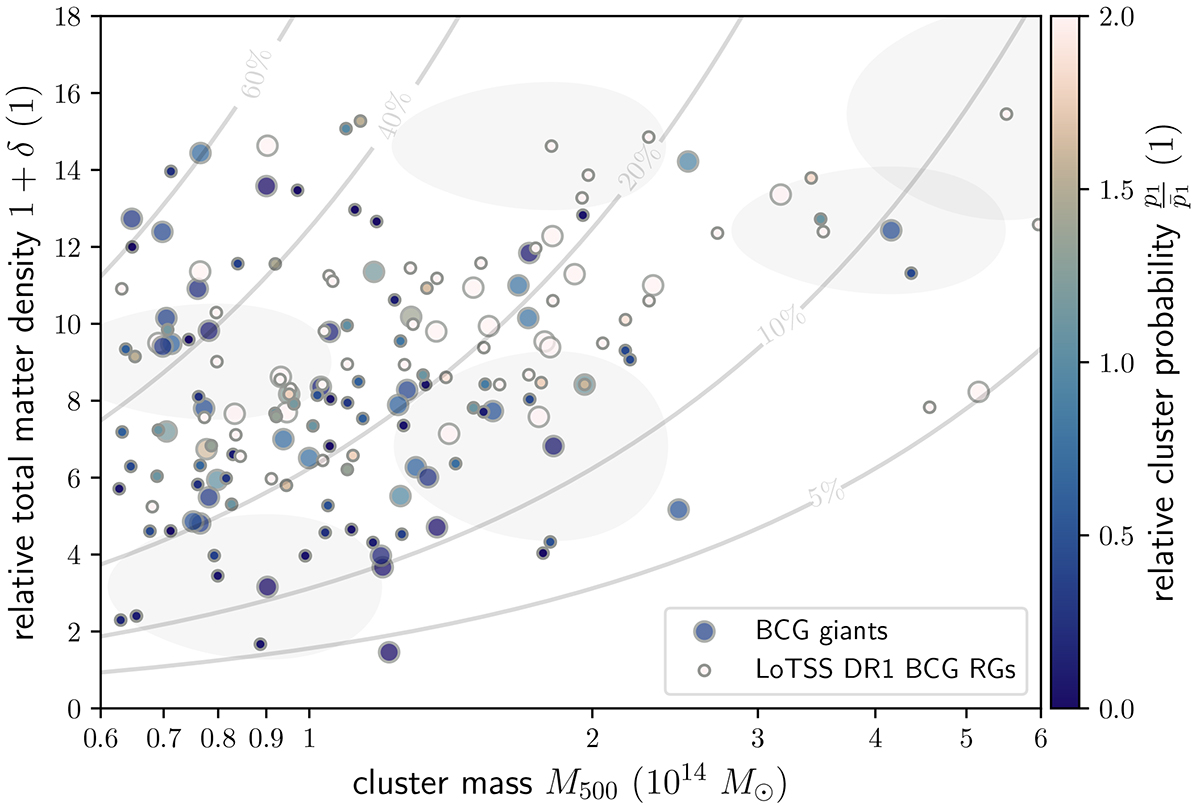Fig. 16.

Download original image
Comparison between environmental estimates for luminous giants (large dots) and LoTSS DR1 RGs (small dots) generated by BCGs in the Local Universe. We compare cluster masses M500 from Wen & Han (2015) with relative densities 1 + δ from the BORG SDSS, and colour the dots based on their cluster probability p1 (relative to the average cluster probability ![]() for luminous giants and LoTSS DR1 RGs). For three randomly chosen giants and three randomly chosen RGs, we visualise uncertainties. Generally, as expected, RG-generating BCGs claimed to be in more massive clusters by Wen & Han (2015) have higher BORG SDSS densities and T-web cluster probabilities. The contours indicate fractions of the density expected through M500, and show that our relative densities fall short significantly in the cluster regime – by a factor that ranges from less than two to more than an order of magnitude. Densities of low-mass clusters are less biased than densities of high-mass clusters. We used flexible voxel method densities here.
for luminous giants and LoTSS DR1 RGs). For three randomly chosen giants and three randomly chosen RGs, we visualise uncertainties. Generally, as expected, RG-generating BCGs claimed to be in more massive clusters by Wen & Han (2015) have higher BORG SDSS densities and T-web cluster probabilities. The contours indicate fractions of the density expected through M500, and show that our relative densities fall short significantly in the cluster regime – by a factor that ranges from less than two to more than an order of magnitude. Densities of low-mass clusters are less biased than densities of high-mass clusters. We used flexible voxel method densities here.
Current usage metrics show cumulative count of Article Views (full-text article views including HTML views, PDF and ePub downloads, according to the available data) and Abstracts Views on Vision4Press platform.
Data correspond to usage on the plateform after 2015. The current usage metrics is available 48-96 hours after online publication and is updated daily on week days.
Initial download of the metrics may take a while.


